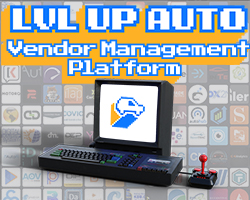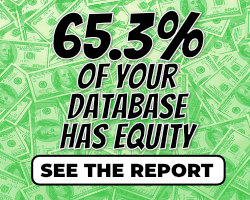If we look back to 2008, we saw dealers scramble to cut costs, streamline processes, and create efficiencies. Everyone was “trimming the fat,” while also shifting operations from new vehicle sales to pre-owned sales and service.
The government stepped in and created the infamous “Cash for Clunkers” program that was a success and saved many dealers that were not at all prepared to weather a storm of any type. Over the next 7–8 years, service and service-based products became must-haves. A shift by dealerships to focus more on service and prepare themselves for the next downturn in new vehicle sales was in full swing. The reality is, shouldn’t that have already been in place long ago?
Fast forward to today. COVID caught 99% of the dealerships flat-footed because they lacked the desire to change and adapt.
Consumers have been telling us for years that they want to buy things more easily, and at this point, almost nobody except the extremely progressive dealers had moved in that direction. Amazon has changed forever how we consume goods. All of us are now conditioned to search, click, and buy. Then, a box magically shows up on your doorstep in a day or two. CARVANA and VROOM have clearly proven that there is consumer demand for a similar experience in automotive. CARVANA is not spending unknown millions on Ads targeting “Contactless Home Delivery” for no reason. People want a remote experience vs. the traditional buying process that requires the consumer to be on-site and in-person.
So, if we already knew all this, why did it take a crisis to initiate the change?
The other important question is, did it actually create this change or did create a facade for some? Pretty much every dealership’s website has a COVID promise and a statement that they will provide a fully transparent remote buying process, including remote test drives, service pickup, delivery, and home delivery.
I can tell you, firsthand, this is not the case.
Part of our day to day market research and prospecting includes asking our sales team to reach out to dealers who are advertising this “Remote” Sales and Service process with Home Delivery and Pick up on their website to see if we can help them out by bringing our services in. What we have found is that there is a very small number of dealers that are actually providing anything even close to this type of service: maybe 1 in 20.
Unfortunately saying you offer a service and actually, offering it are two very different things.
We are now seeing a very large number of dealers around the country scrambling to move toward this new model. What I see is significant infrastructure challenges due to cultural issues because leadership is not seeing their orders through. Before the dealership can truly practice off-site sales and service offerings, or even a hybrid, they need to reset and take necessary steps to redefine their processes at the store.
This crisis has left many without a choice other than to “attempt” to do business with clients remotely, but it has also benefited the progressive dealers that were already there. They already had the infrastructure, culture, and mindset.
Dealers who are taking their business off the lot made a commitment to serve the customer how they wanted to do business; not how the dealership employees want to do business. They are leading their stores instead of letting their stores lead them.
They made the investments in their business practices and SOPs months or even years ago with the vision that consumers are going to visit the dealerships less and less over time. These dealerships and companies didn’t have to do a 180-degree pivot from on-site to off-site, they transitioned to offering both, giving them a huge advantage and ability to scale up on the remote side over the last 4 months without the shock that most are experiencing today.
I personally do not think there is any way to turn back and predict that within the next 2 years over half of all new vehicle sales will be done 100% remote.. I could be wrong.
The government stepped in and created the infamous “Cash for Clunkers” program that was a success and saved many dealers that were not at all prepared to weather a storm of any type. Over the next 7–8 years, service and service-based products became must-haves. A shift by dealerships to focus more on service and prepare themselves for the next downturn in new vehicle sales was in full swing. The reality is, shouldn’t that have already been in place long ago?
Fast forward to today. COVID caught 99% of the dealerships flat-footed because they lacked the desire to change and adapt.
Consumers have been telling us for years that they want to buy things more easily, and at this point, almost nobody except the extremely progressive dealers had moved in that direction. Amazon has changed forever how we consume goods. All of us are now conditioned to search, click, and buy. Then, a box magically shows up on your doorstep in a day or two. CARVANA and VROOM have clearly proven that there is consumer demand for a similar experience in automotive. CARVANA is not spending unknown millions on Ads targeting “Contactless Home Delivery” for no reason. People want a remote experience vs. the traditional buying process that requires the consumer to be on-site and in-person.
So, if we already knew all this, why did it take a crisis to initiate the change?
The other important question is, did it actually create this change or did create a facade for some? Pretty much every dealership’s website has a COVID promise and a statement that they will provide a fully transparent remote buying process, including remote test drives, service pickup, delivery, and home delivery.
I can tell you, firsthand, this is not the case.
Part of our day to day market research and prospecting includes asking our sales team to reach out to dealers who are advertising this “Remote” Sales and Service process with Home Delivery and Pick up on their website to see if we can help them out by bringing our services in. What we have found is that there is a very small number of dealers that are actually providing anything even close to this type of service: maybe 1 in 20.
Unfortunately saying you offer a service and actually, offering it are two very different things.
We are now seeing a very large number of dealers around the country scrambling to move toward this new model. What I see is significant infrastructure challenges due to cultural issues because leadership is not seeing their orders through. Before the dealership can truly practice off-site sales and service offerings, or even a hybrid, they need to reset and take necessary steps to redefine their processes at the store.
This crisis has left many without a choice other than to “attempt” to do business with clients remotely, but it has also benefited the progressive dealers that were already there. They already had the infrastructure, culture, and mindset.
Dealers who are taking their business off the lot made a commitment to serve the customer how they wanted to do business; not how the dealership employees want to do business. They are leading their stores instead of letting their stores lead them.
They made the investments in their business practices and SOPs months or even years ago with the vision that consumers are going to visit the dealerships less and less over time. These dealerships and companies didn’t have to do a 180-degree pivot from on-site to off-site, they transitioned to offering both, giving them a huge advantage and ability to scale up on the remote side over the last 4 months without the shock that most are experiencing today.
- Why do so many dealerships wait until they are forced to change by some outside event like a pandemic or financial downturn?
- When it comes to doing offering “off-lot” sales and servicing, were they not in touch with the consumer sentiment?
- Is business so good the luxury of “why do anything unless you’re forced to” an acceptable attitude?
- Will the consumer force all dealers and service centers to operate this way, or will they accept doing business as usual again?
I personally do not think there is any way to turn back and predict that within the next 2 years over half of all new vehicle sales will be done 100% remote.. I could be wrong.
——————————————————————
Having 37 plus years in the automotive industry, Anthony Monteiro is currently the President of Automotive for DRAIVER the nation’s top On-Demand Dr...












Current Discussion Topics